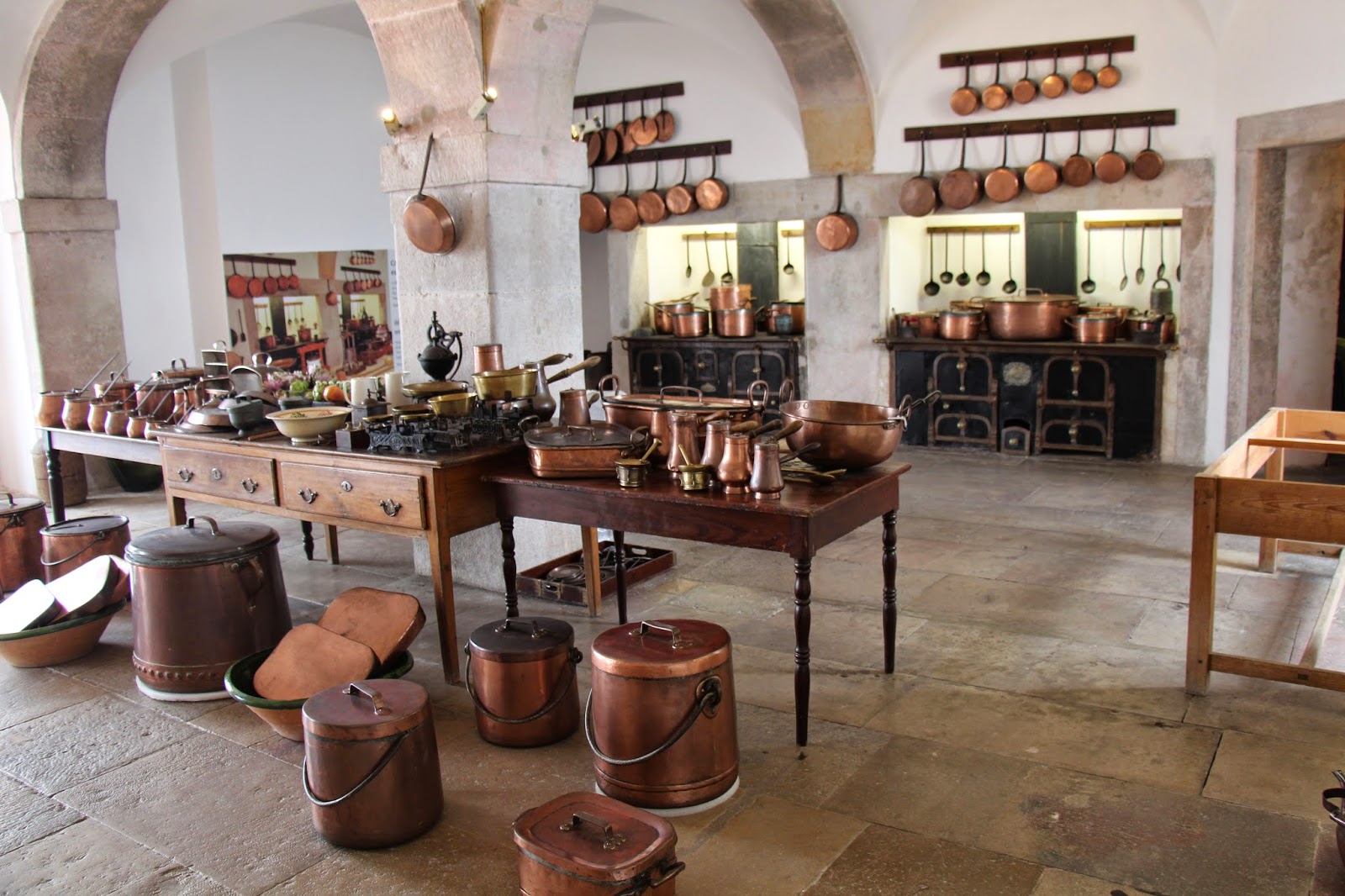Just a warning--I took 580 photographs during our vacation. (I'm happy not to be spending dollars on film and processing these days.) My goal is to give you a taste of what we saw without overwhelming you with pictures. However, this is a challenge, and so this posting may be a little long. Sorry about that!
We returned to Lisbon from Lagos via train and spent a couple of days there before heading to Italy for the second half of our vacation. On the first of these two days, we took a train about 45 minutes north from Lisbon to the charming city of Sintra, which is famous for its three castles, each of which we toured. These are the Pena Palace, built in 1836; a Moorish castle, dating to the 9th century; and Regaleira Palace, dating back to 1697.
Two of the castles, Pena Palace and the Moorish castle ruins, sit high on a mountain against which the city of Sintra is nestled. We took a bus to the top; a walk up would have been exhausting, since the road is exceedingly steep and full of switchbacks. Even with that, the walks between the two castles and on the respective castle grounds were tiring.
Pena Palace is at the very top of the hill. A chapel had once been at this site but had fallen into ruin. Prince Ferdinand acquired the entire area, including the land occupied by the Moorish castle, and built the palace as a summer residence for Portugal's royals. A public park now makes up the entire area. To give you a sense of the entire structure, I borrowed this photograph from another website.
These are some of my photographs.
The interior of the castle is, of course, amazing and extravagant. Here are examples--a dining room and a bedroom.
The kitchen was enormous and was filled with dozens of copper pots and pans.
We walked next (down) to the Moorish castle ruins. Along the way, we spotted a number of other impressive homes and buildings built on the hill but outside the park.
An interesting aspect of the Moorish castle was the way in which it was embedded or fit into the rocks and boulders on the hill.
There were not rooms to see, but there were plenty of interesting walls and spaces that had been stables, common kitchens, or similar facilities.
Here is an example of what I mean by embedding the castle into the surrounding rock features.
I took the next three photographs from a parapet along one Moorish castle wall. The first looks back up at the Pena Palace, the second looks laterally along the hillside at parts of the castle ruins, and the final picture looks down into Sintra at the Regaleira Palace.
Later, when we were about to tour the Regaleira Palace, I took this picture looking back up at the Moorish castle.
Regaleira Palace is, like so many of the old buildings in Europe, filled with art, impressive ceilings and floors, and striking furnishings.
I took this picture looking back at Regaleira Palace as we were about to board the train to return to Lisbon.
On our second day in Lisbon, we visited two museums: the National Tile Museum (Museu Nacional do Azulejo) and the Gulbenkian Museum (Museu Calouste Gulbenkian). The first of these is in an old convent.
On display are thousands of ceramic tiles from five centuries. Many were hand painted, and frequently, collections were designed to create more complex and intricate patterns once put into place.
Some of the rooms in the museum had little to do with the tiles. For example, here is one of the convent chapels. The ceiling was filled with paintings and other kinds of artwork.
Floors in parts of the chapel fascinated me, given the many kinds of wood used and the beautiful ways in which they were themselves "tiled."
At the end of the tour and to demonstrate the ways in which ceramics are broadly used for artistic expression, there was a room displaying pieces that were definitely not tiles. These are not rusty cans but ceramics.
There were several pieces involving sea life themes.
On the grounds of the second museum, the Gulbenkian, there are actually two art museums--the Gulbenkain and the Modern Art Centre. We toured the Modern Art Center first. Several of the modern art pieces were quite clever, involving mechanisms, optical illusions, video art, and the like. They were difficult to photograph. As we moved into the Gulbenkian, we encountered a special area called "The Meeting Point." Here was a display meant to show an initiative between the Gulbenkian and the Modern Art Centre to create a dialogue between the two collections. On display there were a Rembrandt and a piece by Paula Rego, each chosen because of the common theme of the representation of time.
The Gulbenkian has stages devoted to Egyptian, Greek, Middle Eastern, Roman, and other collections. Near the end, we came to a special display of French art, including works by Rene Lalique, some of which you see here.




































No comments:
Post a Comment